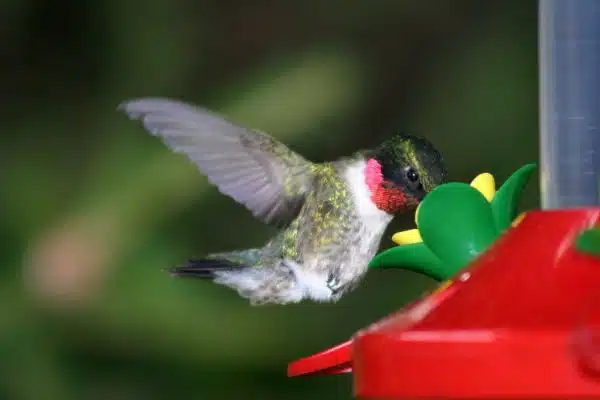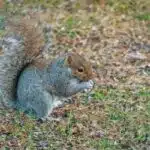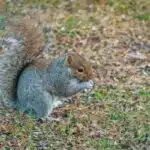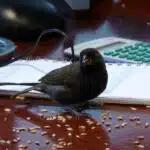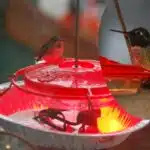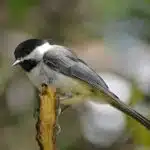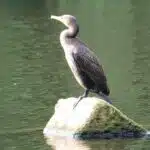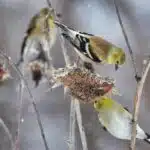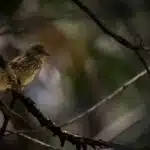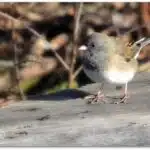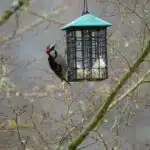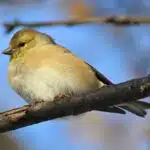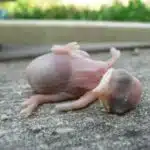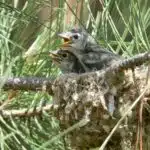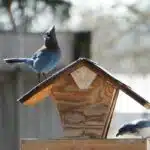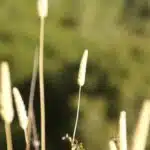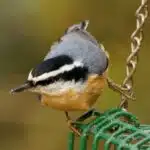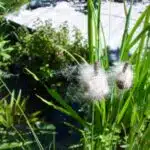As a bird feeder expert, one of the questions I am often asked is how often should one refill their bird feeders. This is an important question as it directly impacts the health and well-being of our feathered friends. It is vital that we understand the feeding habits of birds and the factors that influence their feeding behaviors to effectively answer this question.
Birds are opportunistic feeders, which means they will consume food when it is available to them. In general, it is recommended to refill bird feeders daily or every other day to ensure a consistent food source for birds. However, there are several factors that can impact how often you should refill your bird feeders including weather conditions, feeder type and location, and bird species in your area. By taking these factors into consideration, we can better serve our feathered friends by providing them with a consistent and reliable source of food.
Understanding Bird Feeding Habits
Are you curious about how often you should refill bird feeders? Understanding feeding patterns and bird behavior can help answer this question. Feeding patterns vary depending on the season, location, and type of birds that visit your feeder. By knowing these factors, you can ensure that your feathered friends will always have a steady supply of food.
Birds are creatures of habit; they like to eat at the same time every day. This means that if you consistently refill your bird feeder at the same time each day, birds will learn when to visit and become regular visitors. Some birds may even bring their mates or offspring to your feeder, increasing the number of feathered friends who visit daily.
Consistency is key when it comes to bird feeding. Birds rely on a consistent food source for survival and breeding success. A steady supply of food also prevents birds from overeating or becoming malnourished. Therefore, it is important to refill your bird feeders regularly to provide constant nourishment for our winged companions.
To maintain a healthy bird population in your backyard, it is important to understand their feeding patterns and behavior. Consistent feeding ensures that birds have a reliable food source which promotes healthy growth and breeding success. In the next section, we will explore the importance of consistent feeding in more detail.
The Importance Of Consistent Feeding
Consistency is key when it comes to feeding birds. The benefits of consistent feeding go beyond just keeping the birds happy and healthy. Consistent feeding also helps establish trust between the birds and their human caretakers, which can lead to even more positive interactions.
On the other hand, irregular feeding can have a negative impact on both the birds and their environment. Inconsistent food sources can cause stress for the birds as they are forced to search for alternative sources of nourishment. This stress can lead to decreased immunity, making them more susceptible to diseases. Additionally, if bird feeders are left empty for extended periods of time, local wildlife may be tempted to scavenge for food in areas they normally wouldn’t venture into.
In order to provide optimal care for our feathered friends, it is recommended that bird feeders be refilled on a daily basis. This ensures that there is always a reliable source of food available for the birds, which helps establish trust and encourages regular visits. However, if daily refilling isn’t feasible due to time or resource constraints, every other day refilling is still better than irregular or sporadic feeding schedules. By establishing this routine, we not only benefit the birds but also contribute positively to our environment by reducing wildlife disturbance caused by scavenging behavior.
Daily Vs. Every Other Day Refilling
Consistent feeding is crucial for the health and well-being of our feathered friends. However, it can be challenging to determine how often to refill bird feeders. Daily versus every other day refilling is a common dilemma among bird enthusiasts.
Frequency comparison is an excellent place to start when deciding how often to refill your bird feeders. Bird species differ in their feeding habits, and some may require more frequent refilling than others. For example, smaller birds that eat small seeds or nectar may need daily refilling, while larger birds that eat larger seeds may only need every other day refilling.
Time management is another factor to consider when determining the frequency of refilling your bird feeders. If you have a busy schedule and cannot commit to daily refilling, every other day refilling may be the best option for you. However, keep in mind that less frequent refilling may attract unwanted visitors such as squirrels or raccoons.
Factors that impact the frequency of refilling your bird feeders include weather conditions, seasonality, and feeder capacity. These factors will be discussed in detail in the next section to help you make an informed decision about how often to refill your bird feeders for optimal bird health and enjoyment.
Factors That Impact Refilling Frequency
When it comes to refilling bird feeders, there are several factors that can impact the frequency at which you will need to refill them. The first factor is the number of birds that visit your feeder. If you have a large number of birds visiting your feeder, then you will need to refill it more often. This is because more birds mean more food consumption and thus, a faster depletion of the birdseed.
The type of feeder you use also plays a role in determining how often you should refill it. Some feeders are designed to hold more seed than others, and thus require less frequent refills. Additionally, different types of birdseed have varying densities and can affect the rate at which they are consumed by birds. For instance, sunflower seeds tend to be denser and take longer for birds to eat compared to millet or nyjer seeds.
Tips for efficient bird feeding include monitoring the amount of food in your feeder regularly. As soon as you notice that the seed is running low, refill it promptly to avoid birds going hungry or fighting over limited resources. Also, make sure that your feeder is placed in an easily accessible area and is protected from squirrels or other animal intruders who may deplete the food supply quickly.
With these factors affecting refill frequency and tips for efficient bird feeding in mind, it’s important to note that weather conditions can also play a significant role in how often you’ll need to refill your bird feeder. In the next section, we’ll explore how weather patterns such as temperature changes and precipitation levels can affect your feeding routine.
Weather Conditions
Weather Conditions:
When it comes to refilling bird feeders, one important factor to consider is the weather conditions. Seasonal changes and extreme temperatures can greatly impact the frequency at which you need to refill your feeder. During the winter months, birds rely heavily on feeders for sustenance as natural food sources become scarce. Therefore, it is important to refill the feeders more frequently in these colder months.
Extreme temperatures can also affect how often you should refill your bird feeder. In hot weather, food can spoil quickly and become a breeding ground for bacteria, mold and fungus. This can be harmful to birds and result in illness or death. On the other hand, cold temperatures may cause food to freeze solid and make it inaccessible to birds. To prevent this from happening, it is essential to check feeders regularly and replenish them as needed.
To ensure that your feathered friends are well-fed and healthy all year round, here are some tips on how to maintain your bird feeder during different weather conditions:
- During winter months, choose high-energy foods such as suet or peanuts that will provide birds with much-needed calories.
- In hot weather, avoid filling the feeder up too much as food will spoil quickly in high temperatures.
- In cold weather, place a cover over the feeder to keep snow out of it.
By taking into account seasonal changes and extreme temperatures when refilling your bird feeders, you can help promote a healthy environment for wild birds while enjoying their company from afar.
Next section topic: Feeder type and location
Feeder Type And Location
There is a common theory that bird feeders should be placed in open areas where birds have an unobstructed view of their surroundings. However, recent studies show that this may not always be the case. The placement of your feeder ultimately depends on the type of feeder you have and the bird species you want to attract. For example, tray feeders work best when placed on the ground or mounted at a low height, while tube feeders are better suited for hanging from trees or poles.
In addition to proper feeder placement, it is also important to provide birds with a variety of food. Different bird species have varying diets and preferences, so offering a variety of seed types can attract a diverse range of birds. Some popular seed types include sunflower seeds, millet, and nyjer seeds. It is also beneficial to offer suet cakes for birds that prefer insects in their diet.
Overall, feeder placement and food variety are crucial factors in attracting and maintaining a healthy bird population in your backyard. By understanding the preferences of different bird species and selecting appropriate feeders and food types accordingly, you can create an ideal feeding environment for local birds.
With feeder placement and food variety established, it’s time to consider the specific bird species in your area. Understanding the habits and preferences of local birds can further enhance your backyard bird-watching experience.
Bird Species In Your Area
When it comes to birdwatching, the first step is to identify which species are prevalent in your area. Different birds have different feeding habits, so it’s important to choose a feeder that caters to their needs. For example, tube feeders are ideal for small birds like finches and chickadees, while platform feeders are better suited for larger birds like jays and doves.
Once you’ve identified the species in your area and chosen the right feeder, it’s important to maintain it properly. Feeder maintenance suggestions include cleaning the feeder regularly with hot soapy water to prevent mold growth and disease transmission among birds. It’s also recommended to replace seed every few days to ensure freshness and prevent spoilage.
Another important aspect of birdwatching is learning about the behavior of different bird species. By observing their feeding patterns and preferences, you can gain valuable insights into their biology and ecology. Birdwatching tips include keeping a field guide handy to help identify different species, as well as using binoculars or a spotting scope for closer observation.
In summary, identifying the bird species in your area and choosing the right feeder for their needs is key to successful birdwatching. Proper maintenance and observation can help you learn more about these fascinating creatures and contribute to their conservation efforts.
Next up: How to monitor feeder activity without disturbing the birds.
How To Monitor Feeder Activity
As a bird feeder expert, it is essential to monitor your feathered friends’ feeding habits regularly. Monitoring techniques involve observing the frequency and duration of visits, as well as the amounts of food consumed. With this information, you can make better decisions about how often to refill your feeders and what types of food to offer.
Data analysis plays a crucial role in monitoring feeder activity. By keeping track of the number of birds that visit each day, you will have an idea of how much food they are consuming. You can do this by using a simple tally sheet or even taking photographs to record bird species and counts. Over time, this data will help you identify trends in feeding behavior and adjust your feeding schedule accordingly.
Monitoring feeder activity is an ongoing process that requires patience and persistence. However, with consistent observation and data analysis, you can ensure that your feathered friends are getting the nourishment they need while avoiding overfeeding. In the next section, we will discuss signs of overfeeding and what steps to take to prevent it from happening.
Signs Of Overfeeding
It is important to maintain bird feeder hygiene to avoid attracting unwanted pests. Feeder pests such as squirrels, raccoons, and rodents can consume large amounts of bird seed and damage the feeder itself. To prevent pest infestations, it is recommended to clean feeders regularly with a mild soap solution and hot water. Additionally, it is advised to keep the area surrounding the feeder clean from spilled seeds or hulls.
Overfeeding birds can also lead to negative consequences such as spoiled seed and mold growth. The excess seed can attract more birds than the feeder can handle which could cause fights and aggression between them. In addition, uneaten seed can pile up on the ground causing a breeding ground for bacteria and fungi that could make birds sick. Therefore, it is important to only fill feeders with enough seed that will be consumed within one or two days.
To ensure your feathered friends are getting adequate nutrition from your bird feeder, it’s important to monitor how much they are eating. If you notice an excessive amount of leftover seed in the feeder or on the ground around it, this may be a sign of overfeeding. Another sign of overfeeding is if there are more birds than usual at the feeder or if they are becoming aggressive towards each other while feeding. By being mindful of these signs, you can adjust how often you refill your bird feeders accordingly and ensure your avian visitors stay healthy and happy.
Moving onto signs of underfeeding…
Signs Of Underfeeding
Ensuring that birds are well-fed is a crucial aspect of maintaining their health, which is why it is important for bird feeders to be refilled regularly. Failure to do so may result in underfeeding, which can have negative effects on the birds’ health and overall wellbeing.
One of the most common signs of underfeeding among birds is weight loss. This could easily go unnoticed by an inexperienced bird feeder, but it can lead to severe consequences such as malnutrition and eventually death. Another sign of underfeeding is lethargy or a decrease in activity levels. Birds require energy from food to fly, hunt, and perform other activities essential for their survival. When they are not getting enough food, they become less active and this could affect their ability to fend off predators.
To avoid these issues, it’s crucial to pay attention to feeding frequency. The frequency at which you refill your bird feeders will depend on various factors such as the number of birds and size of the feeder. However, a general rule of thumb is to refill your feeder every two to three days. This ensures that the birds have access to fresh food and water at all times.
In summary, ensuring proper feeding frequency is critical for maintaining bird health as underfeeding can cause serious problems such as weight loss and lethargy. By refilling your bird feeders every two to three days, you can help ensure that the birds in your area are well-fed and healthy. In the subsequent section, we will discuss some common bird feeder problems that you may encounter and how you can solve them effectively.
Common Bird Feeder Problems
One of the most common problems that bird feeders face is squirrel invasion. These furry creatures love to snack on the same food that birds do, and they will stop at nothing to get it. They can climb up poles, jump from trees, and even chew through plastic to reach the food inside. To prevent squirrels from taking over your bird feeder, it’s important to invest in a squirrel-proof feeder or use a baffle to keep them away.
Another issue that bird feeders face is mold growth. Mold can grow on damp seed or in wet weather conditions, which can be harmful to birds if they ingest it. To prevent mold growth, it’s important to clean your bird feeder regularly and ensure that the seed remains dry. You can also opt for seed that has been treated with an antifungal agent.
Overall, there are many challenges that come with maintaining a backyard bird feeder. However, by being aware of common issues like squirrel invasion and mold growth, you can take steps to prevent them from happening in the first place. In the next section, we’ll explore some cleaning and maintenance tips for keeping your bird feeder in top shape so that you can continue to enjoy watching birds visit your backyard sanctuary.
Cleaning And Maintenance Tips
To keep your bird feeders in good condition, it is essential to clean them regularly. A dirty feeder poses a health hazard to birds by spreading diseases, mold, and bacteria. To clean your feeder, you should empty it of all remaining food and debris before washing it with warm water and soap. You can also use a mild bleach solution to disinfect the feeder thoroughly.
Feeder maintenance is also crucial to ensure that your feathered friends have access to fresh food. Ensure that the feeder is securely attached to its support system and always refill it when the food level drops below one-third full. Also, check the feeder for any cracks or damage that may cause seed spillage or attract unwanted pests like squirrels.
By following these cleaning and maintenance tips, you are providing a safe feeding environment for birds while preventing damage to your feeders. A well-maintained feeder will attract more birds, which will provide an excellent opportunity for birdwatching enthusiasts. In addition, regular cleaning and maintenance will save you money in the long run since you won’t need to replace broken or damaged feeders frequently.
Transition:
Now that we’ve covered some cleaning and maintenance tips let’s move on to the best foods for different bird species.
Best Foods For Different Bird Species
As a bird feeder expert, I would advise you to consider the types of seeds that different bird species prefer. For example, finches favor nyjer seeds while cardinals and doves enjoy sunflower seeds. Chickadees and nuthatches are fond of peanuts, while woodpeckers and jays prefer suet cakes. It’s important to offer a variety of seeds to cater to the nutritional needs of various bird species.
Nutritional needs vary depending on the bird species. Some birds require high fat content in their diet during winter months, while others need more protein during breeding season. Black oil sunflower seeds are an excellent source of nutrition for most birds as they contain high fat and protein levels. Safflower seeds are also favored by many bird species as they have a higher protein content than traditional sunflower seeds.
In summary, providing a diverse range of seed options will help attract various bird species with varying nutritional requirements to your feeder. Understanding which birds prefer which types of seeds is crucial in ensuring they receive optimal nutrition from your feeder. By catering to the nutritional needs of different bird species, you’ll be able to provide them with the necessary sustenance required for their continued health and well-being. Moving forward into the next section, let’s explore ways that you can attract more birds to your feeder.
Attracting Birds To Your Feeder
Attracting Techniques If you are serious about attracting birds to your feeder, then it is important to be strategic in your approach. One of the most effective ways to attract birds is by using the right type of food. Different birds prefer different types of food, so it is important to research which types of birds are common in your area and what they like to eat. In addition to food, water is also important for attracting birds. By providing a source of fresh water near your feeder, you can create a welcoming environment that will encourage more birds to visit.
Feeder Placement Another key factor in attracting birds to your feeder is placement. The location of your feeder should be chosen carefully, as it can have a big impact on how successful you are at attracting birds. Ideally, the feeder should be placed in an area that is protected from the wind but still provides ample sunlight. It should also be placed away from any potential predators such as cats or squirrels.
Conclusion: Taking Care of Our Feathered Friends Now that you know some effective techniques for attracting birds to your feeder, it’s important to remember that taking care of our feathered friends goes beyond just providing them with food and water. Regular cleaning and maintenance of your feeder is essential for ensuring that it remains a safe and healthy environment for the visiting birds. Additionally, monitoring bird behavior and health can help you identify any potential issues early on and take action before they become serious problems. By being mindful and proactive in our approach, we can all do our part in helping these beautiful creatures thrive in their natural habitats.
Conclusion: Taking Care Of Our Feathered Friends
Ensuring our feathered friends are well-fed is an important aspect of bird-watching. While it may seem like a simple task, it is crucial that we take care of our bird feeders to maintain the health and safety of our avian visitors. Bird feeder hygiene plays a significant role in preventing the spread of diseases among birds.
To keep your bird feeders clean, empty and clean them regularly with hot, soapy water. This practice prevents mold growth and bacterial buildup, which can be harmful to birds. Additionally, you should always place your bird feeder in a location that is safe for both birds and humans alike. Keep it away from areas where predators may lurk or where children or pets may disturb the feeding birds.
In conclusion, taking care of our feathered friends requires us to pay attention to their needs beyond just filling their feeders regularly. Cleanliness and proper placement are key factors in ensuring the health and safety of birds who visit our backyards. By taking these steps, not only will we be providing nourishment for our winged friends but also helping to maintain their overall wellbeing.
Conclusion
Bird feeding is a rewarding activity that provides numerous benefits to our feathered friends. Understanding bird feeding habits is crucial in ensuring consistent feeding, as it helps birds establish feeding patterns and promotes their overall health. Refilling bird feeders every day or every other day depends on various factors such as weather conditions, cleaning and maintenance, and the type of food you provide.
Weather conditions play a significant role in determining how often you should refill your bird feeder. During the winter months, birds require more food to maintain their body temperature and energy levels. In contrast, during the summer months, birds tend to eat less due to increased natural food sources. It’s important to clean and maintain your bird feeder regularly to prevent mold growth or bacteria buildup that could harm birds.
Providing appropriate foods for different bird species is essential in attracting them to your feeder. Birds have unique diets based on their beak shape and size; therefore, providing a variety of foods can attract different types of birds. Attracting birds requires patience and consistency, but with time, you’ll be rewarded with an abundance of colorful feathered visitors.
In conclusion, taking care of our feathered friends requires knowledge of their feeding habits and needs. Providing consistent feeding through daily or every other day refilling ensures that our feathered friends are healthy and happy. By understanding weather conditions, cleaning and maintenance tips, the best foods for different bird species, and attracting them to your feeder with patience and consistency, you’ll soon enjoy the pleasure of watching these beautiful creatures visit your yard regularly.
Image Credits
- “Humming Bird at Feeder” by Martin Cathrae (featured)

